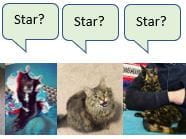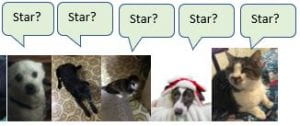By Danny Dotson, Mathematical Sciences Librarian & Science Education Specialist
If you read my previous blog entry, you know I have been pondering a bit lately about the topic of primary sources because I think there is too much emphasis on primary sources. Before anyone starts panicking, let me go into details.
The main reason is that I think the definition is not common across disciplines, yet libraries and librarians often apply a disciplinary definition on the concept to all disciplines. Many non-humanities disciplines would consider the journal literature to be their primary literature, but in reality do not really make use of terms like primary, secondary, or tertiary when describing or categorizing resources. So trying to apply a concept not even used in those disciplines will just create confusion. Sometimes librarians and libraries produce information about this concept as if it’s a standard definition that can and should be applied across all disciplines, which is not the case.
Second, “primary sources” found in libraries are very heavily slanted to certain disciplines. They are heavy on the humanities, medium on the social sciences, and light on the sciences. So trying to encourage the use of these types of items (or implying they are the gold standard) in certain disciplines will leave students of some disciplines with few choices.
A third reason is that the definitions often are applied to the format regardless of purpose or need. For example, a diary is usually considered primary. But what if the diary is used to garner information about a person other than the writer of the diary? That information is secondhand, so is the source being used as a primary source, or is it a secondary source given how it’s being used?
A fourth reason is that students in many courses likely will not use these types of sources. In many cases, books, journal articles, web pages, etc. are what the students will use and are what they need. It is not until students really begin digging deeper when they need what might be called primary sources. But in some disciplines, they may never need or use these types of sources.
A fifth reason is that the primary/secondary/tertiary terms implies value and that primary sources are “better.” Since journal articles are usually considered secondary, some disciplines are being told that their “gold standard” literature (peer reviewed journal articles) is inferior and that they should be using materials which will likely not meet their needs or don’t exist.
Given the above, when should primary sources come up? Only in discipline-appropriate courses when they are likely to be used. Bringing them up at other times is often meaningless for students’ needs or imposing one discipline’s definitions and values on another discipline. And distributing content across disciplines that pushes “primary sources” is doing just that.
So I’m not saying primary sources are bad. I’m saying the concept and term is murky when moving beyond specific disciplines and to act as if it’s a universal concept leads to confusion and problems. I think libraries and librarians should stick to these concepts only when it comes to the disciplines that recognize these concepts as part of their discipline. And I think that we shouldn’t be encouraging the use of these material types for courses/situations where they do not make sense.
I’ll leave with a question to ponder – is there something we can call “primary” materials and talk about them in a way that is more universal and accepted? Perhaps talk about these item types as unique, rare, special, etc. and why they’re important – but not in a manner that implies they’re “better” than other formats?



























